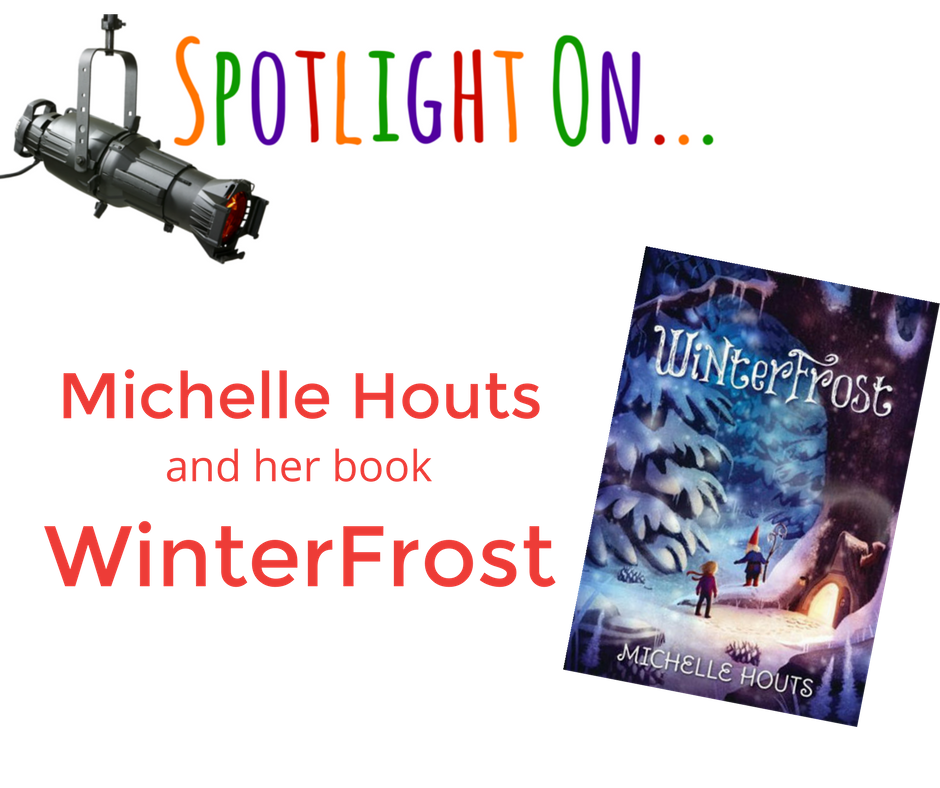
Writing Challenge
Pretend a heavy fog has blanketed your neighborhood. It’s cold, and the freezing temperatures have caused the fog to cling to everything, a delicate, frozen fuzz attaching itself to the bare tree limbs and every blade of grass. You decide to take a walk outside in this magical winter wonderland. Dressed for the cold, you leave your house. But with every step you take, something is happening. You’re becoming smaller. Your boots, your clothes, your coat shrink with you. After a dozen steps, your mittens look like they’d fit a toddler. But they fit you! Around the corner comes the neighbor’s big, brown dog. He’s big enough to swallow you in a single bite. What next? What do you do? Do you return to your house? Head for the woods? Hide? Write about your experiences a nisse-sized human.
Submit your responses by emailing submit@younginklings.org and you might be published on our website!
An Interview with author Michelle Houts
How much time do you spend coming up with ideas versus drafting versus editing and revising? Are you a “plotter” or a “by-the-seat-of-your-pantser”?
I think the project determines if I’m a plotter or a pantser. I’m definitely a pantser when writing fiction novels. I establish setting, characters, and a basic plot and then I set out on a journey to find out what happens next. Very little pre-planning goes on. For non-fiction, I’m much more organized. The research is my plotting. When I’m pretty sure what the whole book is going to look like, I start writing. So, two very different processes for two different genres.
For me, the drafting goes quickly because I rarely edit as I go. Once the story is down, I spent a lot of time on editing. Adding, revising, taking things out. Editing is the longest part of creating a manuscript.
Winterfrost features the mythical, magical nisse; how did you learn about them? How much do you think fairy tales and folklore influence your writing?
When I was in my early twenties, I lived in Denmark for six months. I fell in love with the country, its people, and its traditions. Denmark is the birthplace of Hans Christian Andersen, so the country is steeped in fairy tales, even today. The nisse are an important part of Danish holiday traditions, so I knew they would have a big part in Winterfrost.
In which of your characters do you see parts of yourself and in what ways?
Uh oh. Confession time. I think I’m a little bit like Klakke sometimes. Klakke can be a bit impulsive and lead with his heart, without first considering all the consequences. We’d like to think he’ll outgrow that, but even I still sometimes let my emotions or my excitement influence my decisions more than more practical considerations.
How many unfinished/unpublished books do you have? What have they taught you? Would you ever go back to them?
So many authors have a first novel that never sold. I have two. One of them was, I’m sure, a lesson in drafting. It was me proving to myself that I could write something of significant length. It should probably stay right where it is – in a drawer. The second, though, was close to being really good when I let it go for other projects. I often think about that manuscript. I believe that, having gone through deep editing processes with really great editors, I could go back to that one and make it shine. Its characters are as real to me as the characters in my published books..
What is your writing kryptonite? How do you overcome it?
My writing kryptonite is social media. I have a love-hate relationship with it! Nothing kills my time and creative energy more than a long Facebook binge or scrolling endlessly through Twitter. And yet, it’s where I connect with other children’s literature folks. I’ve met my readers, librarians, teachers, and made author friendships on social media, so I don’t want to shun it entirely. My happy medium is to assign times of the day to check in with social media and turn off notifications at other times. One *ding!* can quickly derail a good writing spurt.
Society of Young Inklings News

- Did you know Society of Young Inklings is a non-profit organization? Help us continue supporting young writers by donating to our end of the year fundraising campaign here.
- Join us this Winter for our Online Writer’s Circles! Join a small circle of dedicated writers who will encourage, provide specific feedback, and inspire you. Your group will be facilitated by a pro-writer and mentor through an online video chat.
- So, you’ve finished your story or poem… Now what? Submit to our Editorial Letter Program. Receive professional feedback from a writer who is passionate about writing craft and who can offer you concrete strategies for taking your work to the next level.
- The Inklings Book Contest is coming! We open for submissions on January 8, 2018, but you can RSVP now to let us know you’re planning to submit. If you RSVP or submit by February 15, you are guaranteed personalized feedback on your writing, even if you’re not selected as a winner or finalist.
A special thanks to Michelle Houts!
 Michelle Houts lives on a family farm in West Central Ohio with her three children, the farmer of her dreams, some cattle, a few hogs, a whole lot of barn cats, a few goats and a Great Pyrenees named Hercules.
Michelle Houts lives on a family farm in West Central Ohio with her three children, the farmer of her dreams, some cattle, a few hogs, a whole lot of barn cats, a few goats and a Great Pyrenees named Hercules.
An award-winning author of fiction and nonfiction for readers age 4 -14, Michelle sparks the imaginations of young readers and writers everywhere with lively and engaging school and library presentations. With Lucy’s Lab, a new chapter book series for science-minded kids, Michelle encourages readers to observe the wonderful world in which we all live.
Learn more about Michelle, her work, speaking schedule, and farm life at www.michellehouts.com. Pick up your copy of WinterFrost here.


